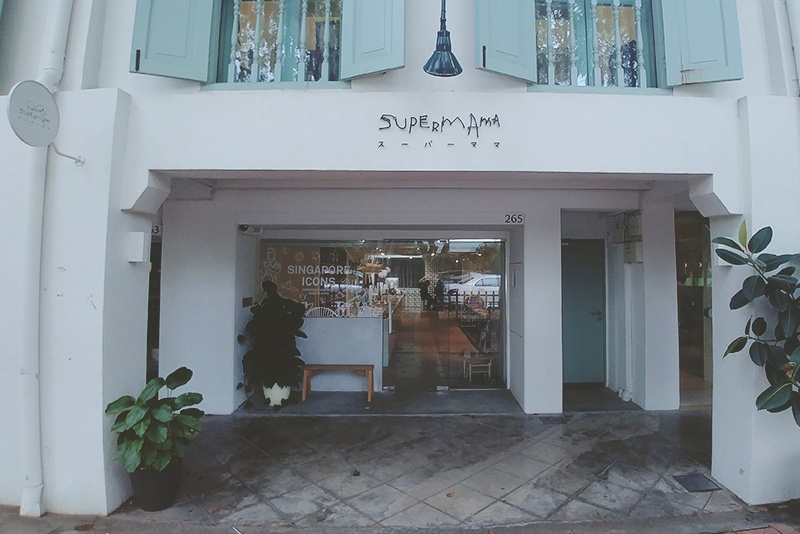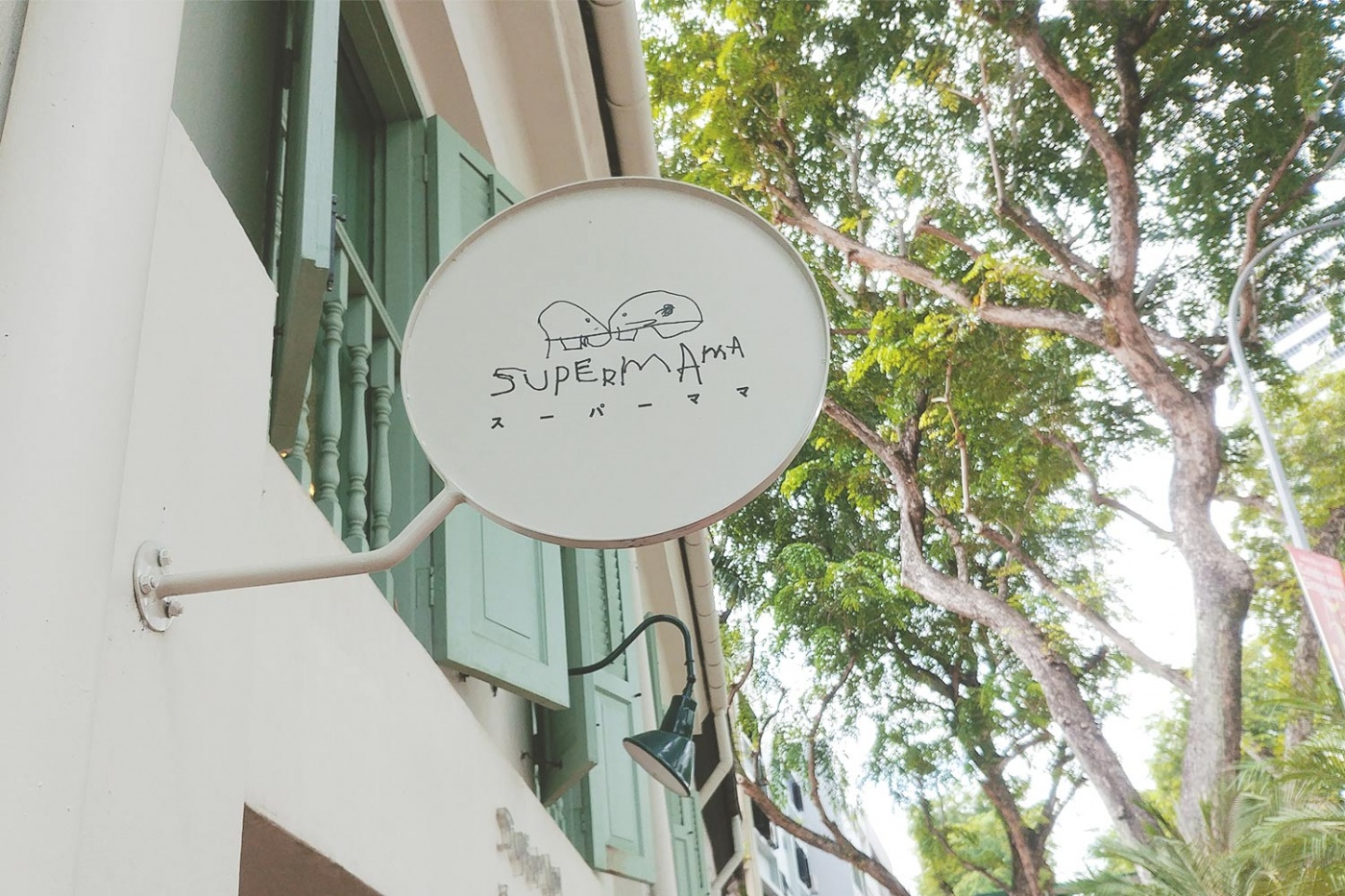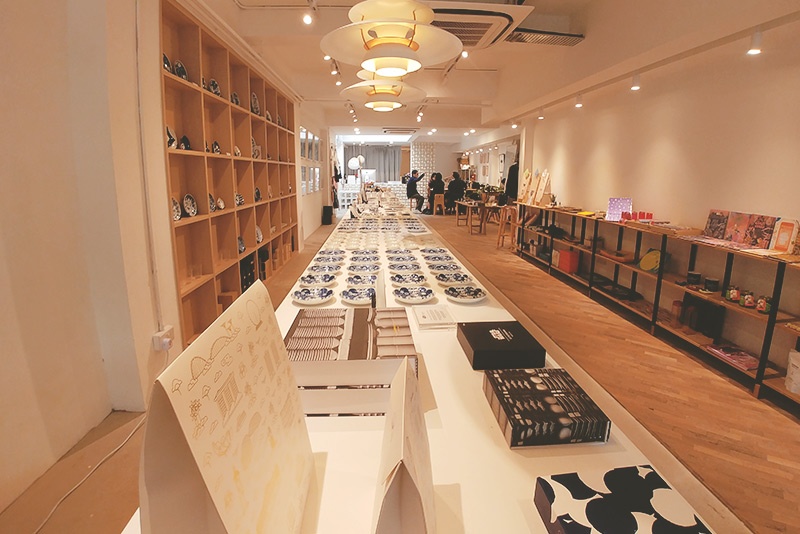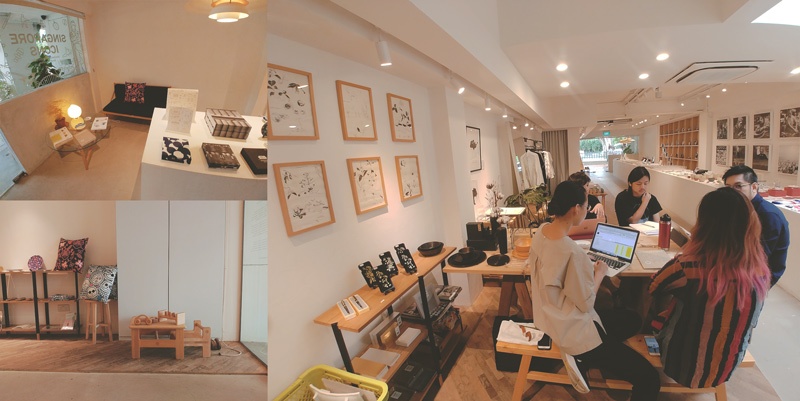Inside Supermama with Edwin Low
I arrive in the midst of a mid-morning drizzle, to a quiet block along Beach Road. The streets are calm with the occasional rustling of quickened footsteps eager to find shelter from the rain. Set between a tea salon and modern furniture store, Supermama sits discreetly with no neon signboards or banners. Yet it is hard to overlook the shop—the brick and glass exterior lined with bold copy stops you in your track, against the building’s minimalistic facade.
In the early 2000s, almost two decades ago, Edwin Low was a student at the National University of Singapore. By then, he had already cultivated a strong work ethic with big ambitions, attending school from 9 a.m. to 5 p.m., while working from 6 p.m. to 2 a.m. It was during this period when he secured a much sought-after internship with the influential Japanese designer, Toshiyuki Kita, which proved to be a timely opportunity.
Edwin’s exposure to Japanese craft makers piqued his interest in the distinctive quality of and sense of respect towards their craft and consumer. He realised a change was needed to make the souvenir culture in Singapore more appealing, and after returning from Japan, Edwin switched his standpoint on his master’s thesis and went into part-time teaching before subsequently opening Supermama.

Edwin’s risky venture has grown from strength to strength in the 7 years since. Once a 60 sq.m store on the second level of a shophouse unit, they have expanded into a 110 sq.m flagship store along Beach Road with 2 other outlets at Gillman Barracks and Shop Tema Hima at the Esplanade.
With Edwin’s background in Industrial design and his passion for the arts, each shop is now filled with selected pieces from top craft makers and designers, directly reflecting his personal taste and values. “We don’t sell products. We sell stories—very strong Singapore stories, and have created a space for them to be told.”
HNW: Tell us the story of Supermama.
Edwin Low: From the start, it was a very personal thing. My wife and I had just had our child and wanted to take a year off. The first six years are the formative years for a child and we did not want to miss them as parents. But we didn’t want to sit around doing nothing, so we began exploring various ideas. Being an industrial designer, having a shop where I could design and produce was the most enticing. But in Singapore, everything is expensive, so we had to sell our home to make our dream a reality. My dad is a Karang guni (rag and bone) man, my mum is a cleaner and my sister has a costly medical condition. In spite of that, my dad could afford to bring us up. We strongly believe that in Singapore, no matter how old or young you are, as long as you work hard, you can make a living.
When I was studying full-time in University, I would go to school from 9 a.m. to 5 p.m., then work from 6 p.m. all the way to 2 a.m. Going through that, has shaped me into the person I am today. I was offered a Master’s scholarship upon graduation, and that was the year I was introduced to Toshiyuki Kita. Even though it was a two-week internship, I realised how humane his philosophy was. In Japan, they don’t design systems, they design for society. That made me switch my perspective because I always looked at design from a technological standpoint. Subsequently, I changed my Master’s thesis to also look at design from the point of sociology instead of technology. While teaching part-time, I discovered that there was a disparity between the product design courses being taught in tertiary institutions. I wanted to make changes in the industry so I left teaching to start Supermama.
In Singapore, we don’t have a strong product culture, and it always goes back to food. When you have a tourist friend, what do you gift them? You can buy food, but after you eat the food, that’s it. So, we wanted to fill the void and I think we’ve done it quite successfully. How do you put Star Wars and Peranakan influences together and create a piece that is intrinsic to Singapore that nobody can copy? We did it and sold close to 2000 pieces. In Supermama, we have a lot of designed-in-Singapore products which we proudly push, with the concept of “designed in Singapore, made in Japan”. That is our whole mantra, and it’s not because we are crazy over Japan. Our designs are simple. Anyone can produce them. But to be able to produce or translate designs with such high quality that when you pick an item up, you know it’s different… I think so far, only the Japanese can do it well. That’s why I want to work with them closely.
How would you describe the Supermama spaces?
When we first came into the empty space of our flagship store, it was super long. And the first idea I had was to break up the space into two maybe three parts. But after a while, I didn’t find that I was taking full advantage of it. Since the space was long, I thought: Is there a way for me to make it even longer?
So, we separated the space into three parts. Instead of cutting the width into three, we went by length. The whole stretch of it. We divided into it 3 lengthy spaces. Our design rationale was that, in Supermama, we kind of call ourselves a retail gallery. We are doing retail but not fast retail. We do not want to be like a supermarket where you come in, get groceries and go. We want people to slow down and appreciate the stuff that we carry. We started to conceptualise a space that would allow people to slow down and get the sense that it’s a museum, and understand that a museum cannot be replaced online. Retail can be done online but how do you replace a museum online? Are we really satisfied with scrolling through pictures? So we decided on an in-between, combining an independent store with a museum.
From the colour temperature of the lightning, to the (ocean) scent of the store, it’s Beach Road from the past. As you walk along this elongated space, you will see photographs of craftsmen that we worked with alongside our porcelain pieces. We kept the concrete flooring to emulate the museum experience.
Come October, it’s likely that we are going to make some changes to the store—maybe add some colouring to the wood and stain it black. Also, we will be introducing a new element to the space: 工房(kobo) by Supermama. 工房(kobo) is a Japanese word meaning space for studio, factories, makers, and manufacturers. After three to four years of working closely with Japanese makers, we realise that beyond their products and designs, they have access to very high-quality materials like leather, fabrics, washi (Japanese paper), wool, etc. The materials available in Singapore are very restricted, and no matter how good the craftsmanship is, the materials that you work with denotes the value of the product. So the concept is to introduce these high quality, difficult-to-source materials to serious entrepreneurs, or serious content creators, and allow them to purchase these materials for their own work. We are also going to start bringing in Japanese craftsmen to show how to make things. Not weekend workshops, but two-week courses where you seriously work on various textures—that will be the mood for 工房(kobo).
Our store in Gillman Barracks is part studio, part shop and part gallery. In Gillman, we bring in a lot more pricier crafts, so it’s essentially an arts space. There are a lot of Japanese crafts that we want to push at Beach Road but the purchasing power here is not as high as compared to the consumers who frequent Gillman Barracks.
Gilman Barracks is the primary space for us to create, test new concepts, do weird stuff and try new labels. Most of our new labels go straight into the Gillman shop first. There is a lot less foot traffic, which is intentional as this gives our shopkeeper the chance to talk to people more.
There is also an event space there in September, where we will be hosting our second edition of the Porcelain Crafts Festival. Last year, we brought together Japanese and local pottery makers. It opened the world of pottery to quite a few, and this year, we are including another section called “Crafts”. It’s not just porcelain, but also wooden furniture, paper and even some leatherware. We want to show shoppers what they are really paying for, beyond the branding and marketing.
Tema Hema in Esplanade is a quiet but interesting space. It is not meant for retail solely, but for us to show off Japanese craftsmanship, so there is not so much of a ‘Designed-in-Singapore’ element, but a focus on ‘Made-in-Japan’ products. We have a simple curated space to try out crazy concepts like filling the entire space with pebbles, akin to a Japanese garden. We also hold flash sales there.
To sum up, Gillman allows us to try out events with different labels, Esplanade allows us to explore the concept of space, and our flagship store on Beach Road is the face of our brand.
What are your favourite features of the shop?
I have 3 areas that I like. The wall beside the sofa, where dads can rest, and across from it, a small area for kids to play while mums shop. And the space by the table where we work and have meetings.
We realised that at the end of the day, people don’t buy products. People buy you. People would buy into “the person who made this”. In Supermama, with every product that we make and carry, I know its maker personally. For every dollar and cent earned, I know who it goes to. This is the human aspect and we want to keep it real, which is why we created a space for people to be at peace and to have conversations.We don’t sell products. We sell stories—very strong Singapore stories, and have created a space for them to be told.
What’s your best-selling item?
Our porcelain collections. The reason being that they are more than just porcelain pieces. They tell stories, and many of them are limited editions because they can only be made in production quantities of 300 or less. The red-coloured series only has 80 pieces, and even with our Star Wars range has only 2000 pieces. Our products are not mass distributed.
Who or what has been the biggest single influence on the way you think?
My wife. She is my best friend, and to be able to marry your best friend and soulmate, is not easy. I take marriage very seriously. To me, marriage is a space where you share everything together. You live together, your minds are together. I feel that getting married is not just for yourself, not just because you want to have a kid or a home, but for that person. How do you make life more complete for each other?Our union is an emotional partnership and an intellectual one. Two minds are better than one and I believe in the exponential power of different minds coming together. My wife influences me a lot in the way she thinks and plans. She completes me. I had to ask for her permission when I was planning Supermama, and if she had given even the slightest hint of hesitation, I wouldn’t have gone ahead with it.
What is your home like?
I stay in a three-room flat and it’s messy. I don’t have the space to play around with, and the shop is almost twice the size of my house. But I think a house has got to be a home. And that is what it is.
The Supermama Porcelain and Craft Festival 2017 is a continuation of the success of the Supermama Porcelain Festival. This year, Supermama has added crafts to the repertoire, hoping to introduce a wider perspective on what “workmanship” truly is.
Opening Launch: 22 September 2017, 6 to 10 p.m., Supermama Gillman Barracks at Blk 47 & Blk 7
Supermama Porcelain and Craft Festival runs from 22 September to 1 October. Opens Daily from 12 to 6 p.m.







